Updated 12 October 2024
Original name – Lauder (Artillerie) Kaserne
Home to:
HQ 105 Reinforcement Group 1945-1948 (1)
50 Reinforcement Holding Unit 1945 (2)
51 Reinforcement Holding Unit 1945-? (3)
53 Reinforcement Holding Unit 1945-? (4)
(1) advance party arrived from Belgium 3 Sep 45 – Main HQ arrived 3 Oct 45 – disbanded by 15 Jul 48
(2) advance party arrived from Belgium 3 Sep 45 – moved to Ripon Barracks 3 Oct 45
(3) arrived from Belgium 10 Sep 45 – disbanded
(4) arrived from Belgium 5 Oct 45 – disbanded
More to follow
Source: 21st Army Group later British Army of the Rhine to Mar 49
Part II
German
Schleswig Holstein Fuss Artillerie Regiment Nummer 9
4. Artillerie Regiment
42.Artillerie Regiment
11th Panzer Regiment (on expansion from Sennelager)
British
11 Armd Div Tpt Col – circa 1951 (1)
1 (BR) Corps Tp Column RASC 1957-1965
10 Corps Tpt Regt RCT 1965-1989
7 Tpt Regt RLC 1989-present
24 PM&C RLC ?-present
(1) 11 Armoured Division Transport Column consisted of an HQ (CRASC) and 106, 107 and 108 Coys RASC. 108 Coy RASC arrived from Minden in early 1952. The fourth unit of the Column was 54 Coy RASC which remained at Tofrek Barracks, Hildesheim.
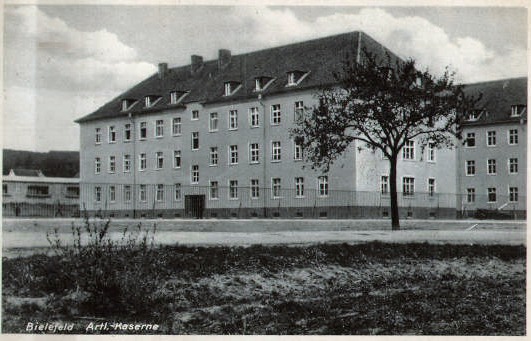
Block 2
10 Corps Transport Regiment RCT
The Regiment’s history in Germany sterns from early 1952 with the formation of the 1st British Corps Troops Column Royal Army Service Corps. By 1953 this had under command companies in Osnabruck, Bielefeld, Herford and Sennelager.
By 1957 the RHQ had moved to Bielefeld where an additional sub unit, 130 Motor Ambulance Squadron – the forerunner of 36 Squadron – was formed. In July 1965 the Column was renamed 10 Corps Transport Regiment, a title it held until the disbandment of the 1st British Corps in 1992. In 1993 the Regiment had 9 Squadron, 17 Squadron, a Support Squadron and a Regimental Workshop REME under command: 36 Squadron having been disbanded in September 1991.
In the latter years, the Regiment’s primary operational role was the outloading of mines and explosives, using its fleet of DROPS vehicles, and the running of the Bulk Refuelling system using its 22,500 litre tanker trucks. On a day-to-day basis, transport was provided in support of training and the movement of combat supplies and fuel. A major task had been the resupply of aviation fuel to the Army Air Corps in Germany on an on-call basis.
The Regiment deployed on Operation Granby as a Group, taking under command 12 Squadron from 8 Regiment. Initially 36 Squadron stayed behind as the Rear Party but it later deployed and remained in the Gulf to assist in the subsequent clean up.
Sporting successes have included Divisional and BAOR honours across a wide range of disciplines. Throughout the 1970s and 1980s the Regimental title was synonymous with boxing success: the Regiment winning all major titles up to and including Army and Combined Services levels. Individuals also took part at National level. In 1989 the Regiment became the Army Major Unit Association Football champions.
The Headquarters moved to Aldershot in 1989, taking under command a re-formed 36 Squadron as the Headquarters Squadron, 1 Squadron, 28 Squadron and 66 Squadron. 9 Squadron and 17 Squadron went on to remain in Germany coming under command of 7 Regiment, as did the Support Squadron, which re-numbered as 617 Headquarters Squadron.
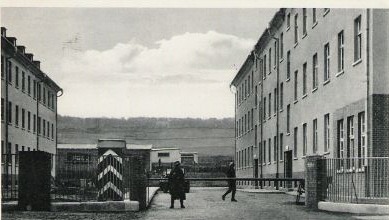
Detmolder Straße
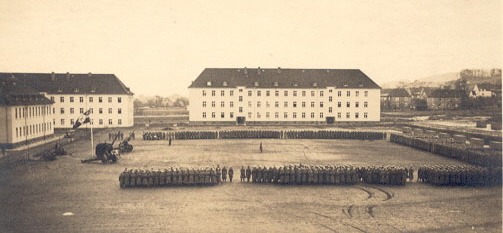
Get on parade……. probably Schleswig Holstein Foot Artillery Regiment Number 9
24 Transport and Movements Regiment RCT
The 24th Transport and Movements Regiment formed on 15 July 1965, bringing together the Mobile Civilian Transport Groups from the 1st Division and the former 45 Movement Control Squadron Royal Engineers. Over the years the structure of the Regiment remained broadly the same although, for a period, 54 Engineer Support and Ambulance Squadron was under command. This squadron disbanded in April 1992.
The Regiment provided support to the 1st Armoured Division, and some of the 4th Armoured Division, inside a geographical area stretching from the North German ports to the Harz mountains. Its main tasks were the provision of coaches in support of operations and training, and the provision of trucks for the BAOR freight service. Included in its establishment of almost nine hundred were over 30 different vehicle types. Its war role, prior to the disbandment of the 1st British Corps, was to provide movements support in the theatre of operations.
On Operation Granby the Regiment was heavily involved in the deployment, resupply and recovery phases. Port Task Groups were set up at Emden and Bremerhaven, and flights were controlled out of Hamburg and Hannover airports. Operation Grapple generated the requirement to use Emden and the Port Task Force was successfully reactivated.
On 1 June 1993, 24 Regiment Royal Logistic Corps formed from elements of the existing 24 Transport and Movements Regiment and 25 Transport and Movements Regiment. It currently forms part of 104 Logistic Brigade.
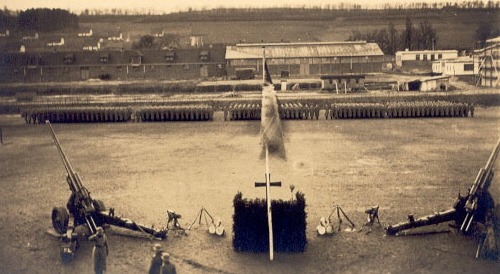
Facing the old reit halle riding hall (now converted into a gymnasium) with stables to the left.
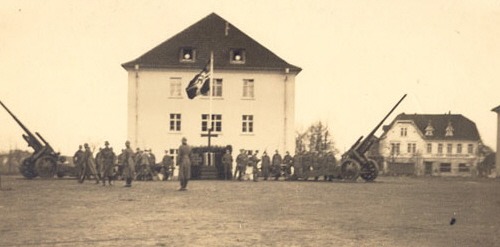
Backing on to Detmolder Straße. The building to the right can still be made out today.
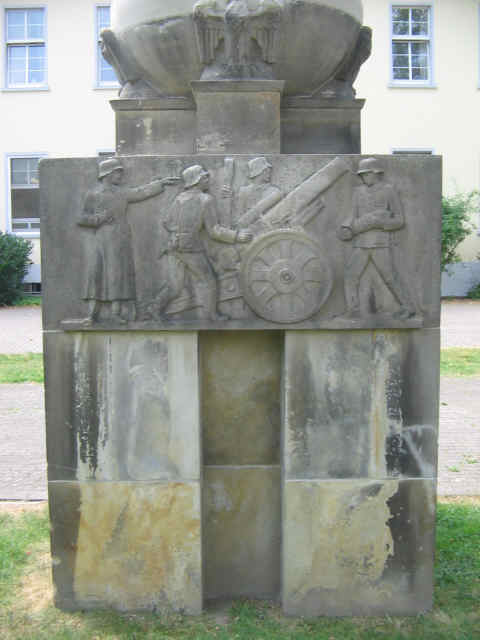

Monument outside the officers mess (above and below) dedicated to SCHLESW.HOLST.FUSS.ARTL.RGT.NR.9

Splash damage from the war. Probably resulting from one of the bombing raids carried out by the Allies.
